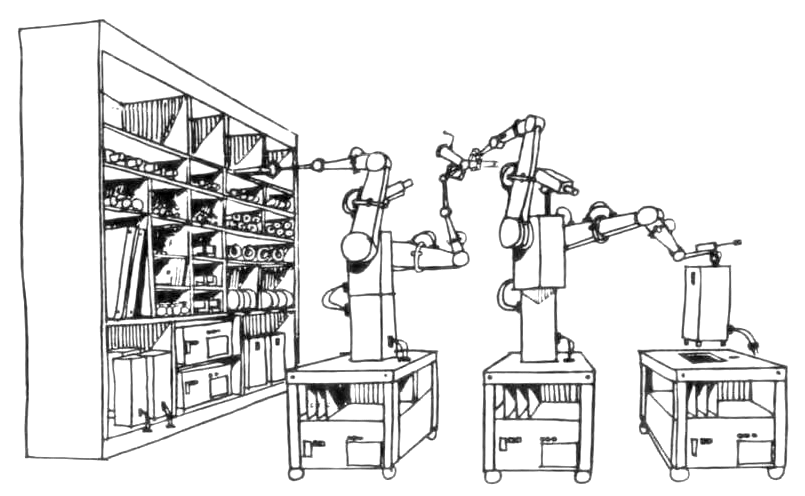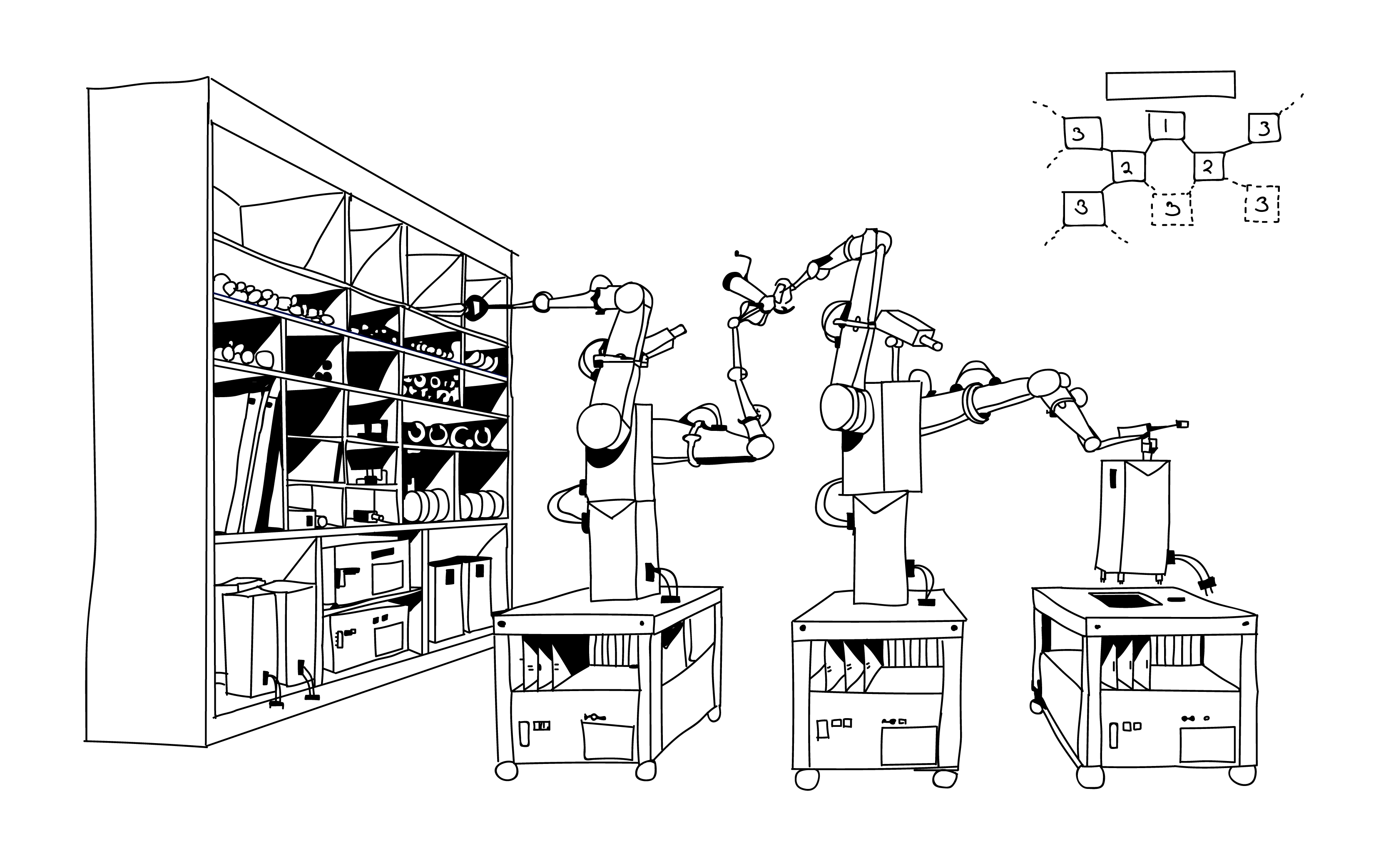|
Ecophagy
Ecophagy is a term coined by Robert Freitas that means the consumption of an ecosystem. It derives . Freitas used the term to describe a scenario involving molecular nanotechnology gone awry. In this situation (called the grey goo scenario) out-of-control self-replicating nanorobots consume entire ecosystems, resulting in global ecophagy. Etymology However, the word "ecophagy" is now applied more generally in reference to any event which destroys nature and mountains full of plastic like the seas nuclear war, the spread of monoculture, massive species extinctions—that might fundamentally alter the planet. Scholars suggest that these events might result in ecocide in that they would undermine the capacity of the Earth's biological population to repair itself. Others suggest that more mundane and less spectacular events—the unrelenting growth of the human population, the steady transformation of the natural world by human beings—will eventually result in a planet that is ... [...More Info...] [...Related Items...] OR: [Wikipedia] [Google] [Baidu] |
Molecular Nanotechnology
Molecular nanotechnology (MNT) is a technology based on the ability to build structures to complex, atomic specifications by means of mechanosynthesis. This is distinct from nanoscale materials. Based on Richard Feynman's vision of miniature factories using nanomachines to build complex products ( including additional nanomachines), this advanced form of nanotechnology (or ''molecular manufacturing'') would make use of positionally-controlled mechanosynthesis guided by molecular machine systems. MNT would involve combining physical principles demonstrated by biophysics, chemistry, other nanotechnologies, and the molecular machinery of life, with the systems engineering principles found in modern macroscale factories. Introduction While conventional chemistry uses inexact processes obtaining inexact results, and biology exploits inexact processes to obtain definitive results, molecular nanotechnology would employ original definitive processes to obtain definitive resul ... [...More Info...] [...Related Items...] OR: [Wikipedia] [Google] [Baidu] |
Grey Goo
Gray goo (also spelled as grey goo) is a hypothetical global catastrophic scenario involving molecular nanotechnology in which out-of-control self-replicating machines consume all biomass (and perhaps also everything else) on Earth while building many more of themselves, a scenario that has been called '' ecophagy'' . The original idea assumed machines were designed to have this capability, while popularizations have assumed that machines might somehow gain this capability by accident. Self-replicating machines of the macroscopic variety were originally described by mathematician John von Neumann, and are sometimes referred to as von Neumann machines or clanking replicators. The term ''gray goo'' was coined by nanotechnology pioneer K. Eric Drexler in his 1986 book '' Engines of Creation''. In 2004, he stated "I wish I had never used the term 'gray goo'." ''Engines of Creation'' mentions "gray goo" as a thought experiment in two paragraphs and a note, while the popularized i ... [...More Info...] [...Related Items...] OR: [Wikipedia] [Google] [Baidu] |
Robert Freitas
Robert A. Freitas Jr. (born 1952) is an American nanotechnologist. Early life and education Freitas was born in Camden, Maine. His father worked in agriculture, and his mother was a homemaker. Freitas married Nancy, his childhood sweetheart, in 1974. In 1974, Freitas earned a bachelor's degree in physics and psychology from Harvey Mudd College. In 1978, he received a Juris Doctor (J.D.) degree from the Santa Clara University School of Law. He has written over 150 technical papers, book chapters, and popular articles on scientific, engineering, and legal topics. Career Freitas interests include nanorobotics, how nanotechnology can extend the life of humans, self-replicating machines, and Cryonics. Freitas introduced the concept of "sentience quotient" in the late 1970s. In 1980, Freitas and William Gilbreath were participants in a NASA study regarding "Advanced Automation for Space Missions," and presented the feasibility of self-replicating machines in space, using advan ... [...More Info...] [...Related Items...] OR: [Wikipedia] [Google] [Baidu] |
Ecocide
Ecocide (from Greek 'home' and Latin 'to kill') is the destruction of the natural environment, environment by humans. Ecocide threatens all human populations that are dependent on natural resources for maintaining Ecosystem, ecosystems and ensuring their ability to support future generations. The Independent Expert Panel for the Legal Definition of Ecocide describes it as "unlawful or wanton acts committed with knowledge that there is a substantial likelihood of severe and either widespread or long-term damage to the environment being caused by those acts". Common causes of ecocide include war, pollution, overexploitation of natural resources such as the Amazon rainforest, and industrial disasters. The term was popularised by Olof Palme when he accused the United States of ecocide at the 1972 United Nations Conference on the Human Environment, UN Conference on the Human Environment. The Rome Statute of the International Criminal Court (adopted 1998, enforced 2002) makes no prov ... [...More Info...] [...Related Items...] OR: [Wikipedia] [Google] [Baidu] |
Molecular Assembler
A molecular assembler, as defined by K. Eric Drexler, is a "proposed device able to guide chemical reactions by positioning reactive molecules with atomic precision". A molecular assembler is a molecular machine. Some biological molecules such as ribosomes fit this definition as biological machines. This is because they receive instructions from messenger RNA and then assemble specific sequences of amino acids to construct protein molecules. History Beginning in 2007, the British Engineering and Physical Sciences Research Council has funded development of ribosome-like molecular assemblers. Clearly, molecular assemblers are possible in this limited sense. A technology roadmap project, led by the Battelle Memorial Institute and hosted by several U.S. National Laboratories has explored a range of atomically precise fabrication technologies, including both early-generation and longer-term prospects for programmable molecular assembly; the report was released in December, 2007 ... [...More Info...] [...Related Items...] OR: [Wikipedia] [Google] [Baidu] |
Ecocide
Ecocide (from Greek 'home' and Latin 'to kill') is the destruction of the natural environment, environment by humans. Ecocide threatens all human populations that are dependent on natural resources for maintaining Ecosystem, ecosystems and ensuring their ability to support future generations. The Independent Expert Panel for the Legal Definition of Ecocide describes it as "unlawful or wanton acts committed with knowledge that there is a substantial likelihood of severe and either widespread or long-term damage to the environment being caused by those acts". Common causes of ecocide include war, pollution, overexploitation of natural resources such as the Amazon rainforest, and industrial disasters. The term was popularised by Olof Palme when he accused the United States of ecocide at the 1972 United Nations Conference on the Human Environment, UN Conference on the Human Environment. The Rome Statute of the International Criminal Court (adopted 1998, enforced 2002) makes no prov ... [...More Info...] [...Related Items...] OR: [Wikipedia] [Google] [Baidu] |
Self-replicating Machine
A self-replicating machine is a type of autonomous robot that is capable of reproducing itself autonomously using raw materials found in the environment, thus exhibiting self-replication in a way analogous to that found in nature. The concept of self-replicating machines has been advanced and examined by Homer Jacobson, Edward F. Moore, Freeman Dyson, John von Neumann, Konrad Zuse and in more recent times by K. Eric Drexler in his book on nanotechnology, '' Engines of Creation'' (coining the term clanking replicator for such machines) and by Robert Freitas and Ralph Merkle in their review ''Kinematic Self-Replicating Machines'' which provided the first comprehensive analysis of the entire replicator design space. The future development of such technology is an integral part of several plans involving the mining of moons and asteroid belts for ore and other materials, the creation of lunar factories, and even the construction of solar power satellites in space. The von Neuman ... [...More Info...] [...Related Items...] OR: [Wikipedia] [Google] [Baidu] |
Extinction
Extinction is the termination of an organism by the death of its Endling, last member. A taxon may become Functional extinction, functionally extinct before the death of its last member if it loses the capacity to Reproduction, reproduce and recover. As a species' potential Range (biology), range may be very large, determining this moment is difficult, and is usually done retrospectively. This difficulty leads to phenomena such as Lazarus taxon, Lazarus taxa, where a species presumed extinct abruptly "reappears" (typically in the Fossil, fossil record) after a period of apparent absence. Over five billion species are estimated to have died out. It is estimated that there are currently around 8.7 million species of eukaryotes globally, possibly many times more if microorganisms are included. Notable extinct animal species include Dinosaur, non-avian dinosaurs, Machairodontinae, saber-toothed cats, and mammoths. Through evolution, species arise through the process of specia ... [...More Info...] [...Related Items...] OR: [Wikipedia] [Google] [Baidu] |
Ecosystem
An ecosystem (or ecological system) is a system formed by Organism, organisms in interaction with their Biophysical environment, environment. The Biotic material, biotic and abiotic components are linked together through nutrient cycles and energy flows. Ecosystems are controlled by external and internal Environmental factor, factors. External factors—including climate—control the ecosystem's structure, but are not influenced by it. By contrast, internal factors control and are controlled by ecosystem processes; these include decomposition, the types of species present, root competition, shading, disturbance, and succession. While external factors generally determine which Resource (biology), resource inputs an ecosystem has, their availability within the ecosystem is controlled by internal factors. Ecosystems are wikt:dynamic, dynamic, subject to periodic disturbances and always in the process of recovering from past disturbances. The tendency of an ecosystem to remain clo ... [...More Info...] [...Related Items...] OR: [Wikipedia] [Google] [Baidu] |
Human Overpopulation
Human overpopulation (or human population overshoot) is the idea that human populations may become too large to be sustainability, sustained by their environment or resources in the long term. The topic is usually discussed in the context of world population, though it may concern individual nations, regions, and cities. Since 1804, the global living human population has World population milestones, increased from 1 billion to 8 billion due to Modern medicine, medical advancements and improved agricultural productivity. Annual world population growth peaked at 2.1% in 1968 and has since dropped to 1.1%. According to the most recent Projections of population growth, United Nations' projections, the global human population is expected to reach 9.7 billion in 2050 and would peak at around 10.4 billion people in the 2080s, before decreasing, noting that fertility rates are falling worldwide. Other models agree that the population will stabilize before or after 2100. Conversely, some ... [...More Info...] [...Related Items...] OR: [Wikipedia] [Google] [Baidu] |
Monoculture
In agriculture, monoculture is the practice of growing one crop species in a field at a time. Monocultures increase ease and efficiency in planting, managing, and harvesting crops short-term, often with the help of machinery. However, monocultures are more susceptible to diseases or Pest (organism), pest outbreaks long-term due to localized reductions in biodiversity and nutrient depletion. Crop diversity can be added both in time, as with a crop rotation or sequence, or in space, with a polyculture or intercropping. Monocultures appear in contexts outside of agriculture and food production. Grass lawns are a common form of residential monocultures. Several monocultures, including single-species forest plantations, have become increasingly abundant throughout the tropics following market globalization, impacting local communities. Genetic monocultures refer to crops that have little to no genetic variation. This is achieved using cultivars, made through processes of propagation ... [...More Info...] [...Related Items...] OR: [Wikipedia] [Google] [Baidu] |







